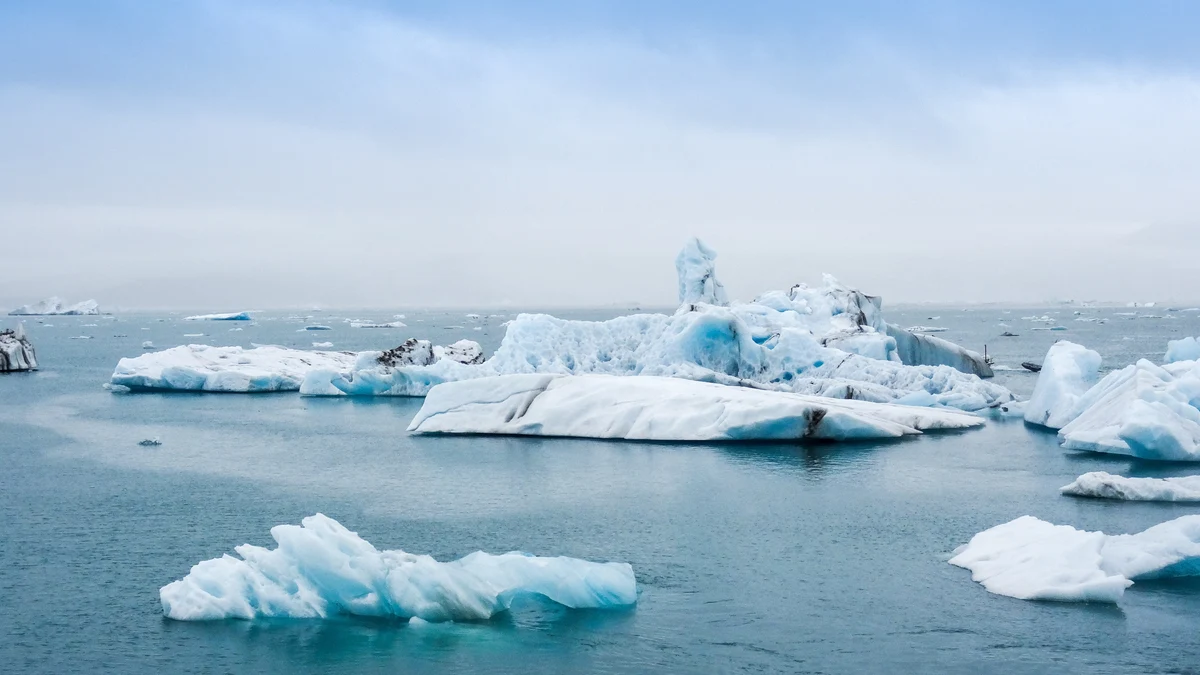
2023 is not only on track to be warmest year on recordbut will also break records in greenhouse gas concentrations and ice retreat from Antarctica. This was warned this Thursday by the World Meteorological Organization (WMO) at the start of the COP28 climate summit in Dubai.
The WMO has published a interim report which reiterates all the negative signs that had already been warned in a year “with extreme phenomena that have left a trail of devastation and despair.” “Greenhouse gas concentrations are breaking all records, global temperatures are reaching historic records, sea level rise is unprecedented, and the extent of Antarctic sea ice has never been lower,” he said. summarized its general secretary, Petteri Taalas
Thus, the UN agency assumes – in the absence of data for November and December – that 2023 will be the warmest year of the last 174 in which observations are recorded. Until October, the average temperature was 1.4 degrees above the pre-industrial period, already close to the 1.5 degrees established as a limit in the Paris Agreement and well above the temperature excesses of the two hottest years so far: 2016 (when it exceeded 1.29 degrees) and 2020 (1.27).
“The difference is so important that, in all probability, the values that will be recorded in the last two months of the year will not have an impact on the classification,” maintains the WMO, whose report even ventures to predict that 2024 will be even warmer than 2023since this year the global climate has begun to influence El Niño phenomenonnormally associated with increases in temperatures, which tend to be even greater in the second year after its beginning.
“Should shock world leaders”
A panorama before which the Secretary General of the United Nations, Antonio Guterreshas pointed out that this data, together with the meteorological disasters that have been experienced this year, “should shock world leaders”. “It should force them to act, because we have the roadmap to limit the increase in global temperatures to 1.5 degrees and avoid the worst of climate chaos,” he said in a video message during the presentation of the WMO data. .
For his part, Taalas has asserted that it is no longer within humanity’s reach to return to the climate of the last century, but we must continue working to prevent it from getting worse. “We cannot return to the climate of the 20th centurybut we must act now to limit the risks of a more inhospitable climate in this century and those to come,” he warned. “We risk losing the opportunity to save our glaciers and stop sea level rise,” he also warned. .
Gas concentration and melting
The truth is that the WMO also points out in its report that 2023 will also will surpass historical gas concentration records greenhouse effect of 2022, when it was already 150% higher than the pre-industrial era in the case of carbon dioxide. The concentration of methane measured in 2022 was 266% higher and that of nitrous oxide 124%, about levels thatThey have already been surpassed this year in measurements at strategic meteorological stations such as Mauna Loa (Hawaii) or Tasmania (Australia).
Other worrying records, already confirmed, have been measured at the poles: Antarctica reached a historic low in the extent of its sea ice with just 1.79 million square kilometers in February, the lowest figure since satellite measurements began in 1979.
Equally disturbing data were recorded in the Arcticwhere the minimum value of extension in the year (4.23 million square kilometers in September) was the sixth lowest ever recorded, or in the European Alps, where measurements in Switzerland are catastrophic: in just two years its glaciers have lost 10% of its volume.
The report, prepared with a view to pressuring the world to increase its emissions reduction efforts in Dubai, also warns of a unprecedented sea level rise, related precisely to the melting of glaciers and ice masses. Between 2013 and 2022, the average rise in the oceans has been 4.72 millimeters per year, more than double that recorded in the previous 10 years, 2.14 millimeters per year.
The year 2023 has also beaten sea surface temperature recordsfar surpassing previous records, with “exceptionally high values in the eastern North Atlantic, the Gulf of Mexico and the Caribbean,” according to the report.
Catastrophes due to climate change
The WMO recalls that these record values have been accompanied in 2023 by extreme weather events that have caused great losses economic and human, such as the floods that the Cyclone Daniel caused in Greece, Bulgaria, Türkiye or Libya. In the latter country, the floods caused two reservoirs to burst and devastated the coastal city of Derna, leaving behind 4,300 fatalities and 8,500 missingone of the worst climate change-related disasters of the year.
In February and March, the Tropical Cyclone Freddyone of the longest and longest ever recorded – it originated on the western coasts of Australia and devastated those of southern East Africa, on the other side of the Indian Ocean -, caused hundreds of deaths in countries such as Malawi, Mozambique, Zimbabwe or Madagascar.
Europe and Maghreb lived big heat waves in July, for now the hottest month on recordin which the thermometers reached 48.2 degrees in Italy, 49 in Tunisia, 50.4 in Morocco or 49.2 in Algeria.
The fires in Canada droughts in the Horn of Africa and Latin America and many other extreme phenomena complete the desolate panorama of a year in which the socioeconomic repercussions were felt in food insecurity, the increase in “climate refugees” or growing conflicts over dwindling resources.
Source: Lasexta
Ricardo is a renowned author and journalist, known for his exceptional writing on top-news stories. He currently works as a writer at the 247 News Agency, where he is known for his ability to deliver breaking news and insightful analysis on the most pressing issues of the day.











